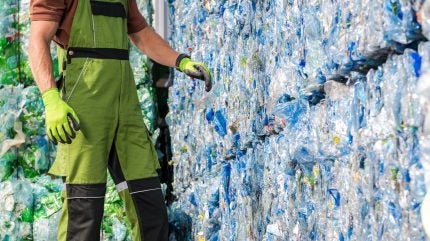
The report titled ‘Transforming PET Packaging and Textiles in the United States‘ was supported by Closed Loop Partners, Eunomia, and The Recycling Partnership. It was commissioned by Eastman Chemicals.
It was developed with input from an independent Steering Group consisting of 15 representatives from various sectors, including industry, waste management, academia, and civil society.
This comprehensive analysis evaluates the current state of circularity within US PET packaging and polyester textiles while employing detailed system modelling techniques to assess the impact of implementing established circular strategies (reduce, reuse, recycle) across various scenarios. It also provides recommendations aimed at both governmental bodies and private enterprises to capitalise on opportunities presented by ambitious initiatives.
The report comes on the heels of significant policy developments, including California’s recent enactment of the Responsible Textile Recovery Act of 2024 and an Executive Order aimed at addressing plastic pollution.
Additionally, Extended Producer Responsibility (EPR) laws for packaging have been enacted in five states – California, Colorado, Maine, Minnesota, and Oregon – with proposals under consideration in 10 more states.
Currently, US consumers use over 100bn PET bottles and more than 10bn polyester garments annually. Together, these materials represent approximately 30% of total plastic packaging and textile consumption in the country.

US Tariffs are shifting - will you react or anticipate?
Don’t let policy changes catch you off guard. Stay proactive with real-time data and expert analysis.
By GlobalDataIf consumption patterns persist unchanged, projections indicate that PET/polyester usage could increase by 1.5 times by 2040, leading to an annual waste output of 13m metric tons directed to landfills and incineration — comparable to the volume generated by 750,000 garbage trucks.
Greenhouse gas (GHG) emissions from domestic production of PET/polyester are expected to rise to levels 2.5 times higher than what is necessary to meet US emissions reduction goals by that year.
The report highlights the advantages of implementing circular economy strategies. These strategies include minimising unnecessary material use, promoting packaging reuse and textile resale, and enhancing recycling efforts through both mechanical methods and emerging depolymerisation technologies.
Depolymerisation recycling presents an opportunity to convert polyester textiles and difficult-to-recycle PET packaging into high-quality recycled materials, thereby decreasing reliance on fossil fuels and lowering emissions, the study notes.
By 2040, if proven circular measures are adopted instead of maintaining historical trends, significant environmental improvements could be achieved:
- Recycling rates for PET packaging could rise to 70%, up from the current rate of 23%, while polyester textile recycling could increase to 19%, compared to just 1% today
- Consumption of virgin PET/polyester could be halved, along with a corresponding reduction in landfill waste
- Projected GHG emissions from packaging could decrease by approximately 60%.
A shift in the PET packaging and polyester textile sectors could result in the creation of an additional 46,000 direct jobs in the US and generate an extra $4.9bn annually for domestic recycling industries.
To facilitate this transformation effectively, the report advocates for prompt action from US policymakers and industry stakeholders.
Policymakers can implement effective EPR laws that encourage circular product design through eco-modulated fees and support the growth of domestic infrastructure. Additionally, they can improve collection systems, set requirements for higher use of post-consumer recycled content (rPET), and reduce risks tied to private sector investments.
Industry leaders can contribute by reducing excessive consumption of packaging and textiles, designing products with reuse and recycling in mind, improving textile collection efforts, and increasing the use of domestically sourced rPET.
The report stresses the importance of collaboration among government entities, industry participants, and investors to cultivate an environment conducive to investment flows and technology adoption necessary for scaling innovative solutions such as AI-based waste sorting systems and depolymerisation recycling technologies.



